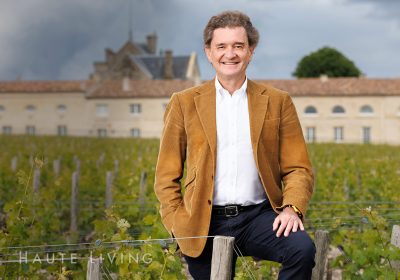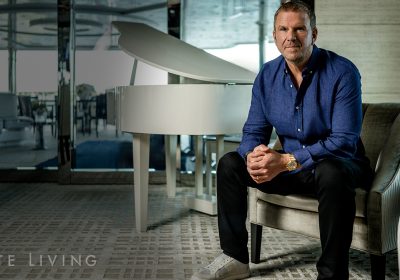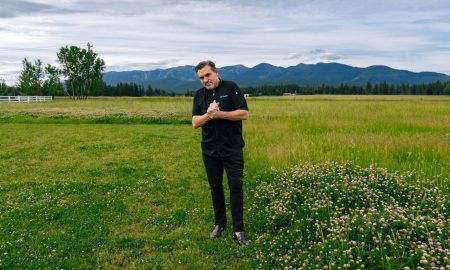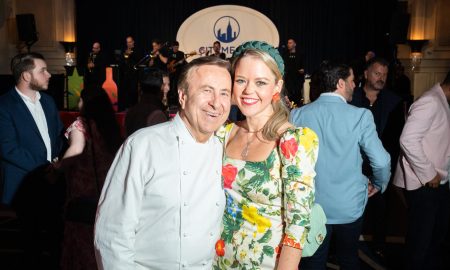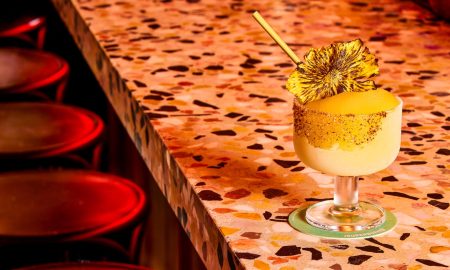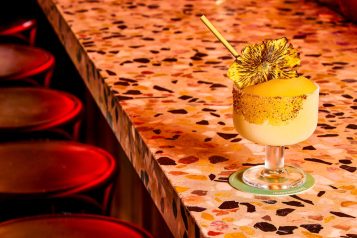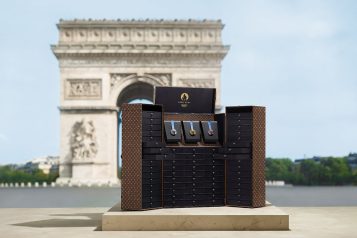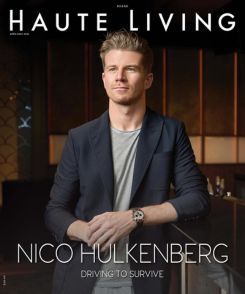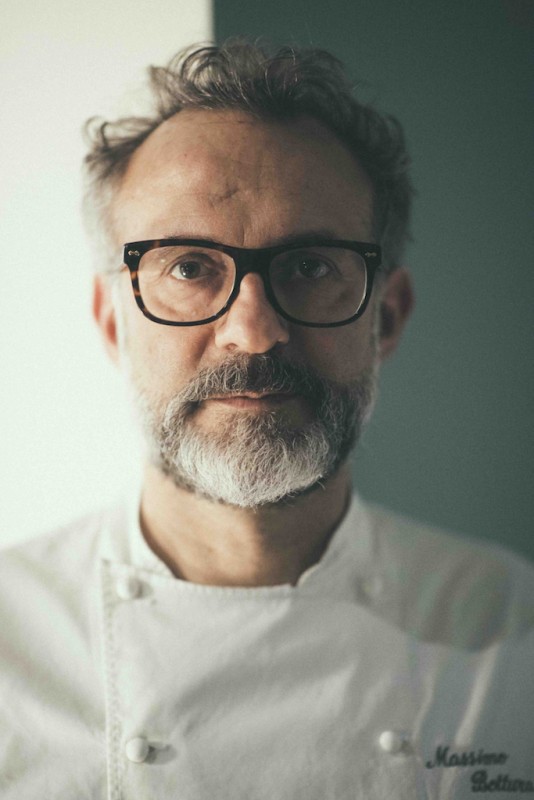 Photo Credit: Callo Albanese Sueo
Photo Credit: Callo Albanese Sueo
Chef Massimo Bottura is unequivocally one of the finest chefs in the world. With his three-Michelin-starred Osteria Francescana in Modena, Italy, he has earned the prestigious top five ranking of The World’s 50 Best Restaurants—earning the No. 1 title in 2016 and the No. 2 title in 2017. But Bottura is more than just a world-class chef—he is also an avid philanthropist, devoting much of his life to put an end to a cause that is near and dear to his heart: food waste. With his new book, Bread is Gold, the renowned chef showcases recipes along with 65 of the world’s best chefs (René Redzepi, Alain Ducasse, Alex Atala, Daniel Humm, Ana Roš, Gastón Acurio, Mario Batali and more) to demonstrate how you can prepare extraordinary meals from ordinary and sometimes “wasted” ingredients.
This special book is in conjunction with his Refettorio Ambrosiano in Milan—a soup kitchen that coincides with the Milan Expo that he transformed from an abandoned theatre and invited the world’s top chefs to visit and cook throughout the run of the Expo. All proceeds from the book will be given back to the work with the Refettorio Ambrosiano, which is making huge strides to combat food waste around the globe.
Here, Haute Living sits down with the acclaimed chef to chat about his upcoming collaboration with Miami-based chef José Mendín for the first international Mendín and Friends series at his new restaurant, Habitat, as well as his new book, Bread Is Gold, charity work and other exciting projects in 2018:
HL: How did the partnership with you and Chef Mendín transpire for the special Mendín and Friends Dinner this week?
MB: He’s a very good guy. The first time I took a look at his kitchen [last year], I was very impressed because it was created in the right way and it was super clean and well-organized. Jiro, the master of sushi in Tokyo always says, ‘if you can clean very well, you can cook very well,’ because being a chef and knowing how to cook is also knowing how to master a space and stay organized. So, I was immediately drawn to his kitchen, and it is a place I felt comfortable working.

Photo Credit: Food Comma Hospitality Group
HL: How did you create the menu for the dinner?
MB: I actually know the United States very well and I used to visit Miami frequently during the ’80s, so the territory isn’t too unfamiliar for me—I knew exactly what to expect. Therefore, my team and I knew the right ingredients to choose and we picked ingredients we were familiar with. I am excited about the dessert we are featuring—it’s the first time we’re ever preparing it outside of our restaurant. It’s inspired by five different textures and temperatures—it’s very intricate looking! It’s almost like a classic movie theatre dish—popcorn, but with ice cream popping up at the top. It’s unexpected.
HL: What flavors does the menu showcase? Is it more Italian-inspired or are you going with the Spanish theme of the restaurant [Habitat]?
MB: The menu is my mind exactly—it’s a very cultured menu that expresses my passions: art, music, food. I compress my passion into edible bites, sitting on centuries of history. In Italian history, the Romans switched the Greek philosophy, “we eat to live,” to “we live to eat.” That’s a philosophy I embody in all of my food. It’s not just serving food—it’s about the emotions that go into it.
HL: Tell us about your project: Refettorio Ambrosiano in Milan. How do you feel this will revolutionize the way we look at food and utilize its ingredients?
MB: This was such a deep and strong experience for me. As a chef, I’ve always wanted to express myself within a community and help them, along with the best chefs in the world to come together, stand together and share an incredible experience like this to create a universal exposition. This is something that 10 years ago, I would’ve never imagined could be possible. But we live with big dreams and we jump and look for the unexpected and this was truly unbelievable. The Refettorio has had such a huge cultural and social impact—everyone talks about food waste now, but at the time that I started this project, no one was. Two states, plus England, are discussing it particularly—they passed a law against food waste after what we did. We showed the world that we are much more than the sum of our recipes. And after that, the mayor of Rio De Jainero asked me to open the same project in Rio for the Olympics and we did it. The Rockefeller Foundation gave us a big grant to continue to open in the U.S. and on March 15th, we will have opened our 6th Refettorio worldwide. It’s a crazy experience. And the book is part of the whole project because communicating our message is a major part of our success—we need to transfer our mission to as large of an audience as possible. I believe that this is the most important book of the last 30 years.
HL: What was the toughest part of bringing this idea to life?
MB: The toughest part was convincing people to invest in the project and explain to them what we want to do. Getting the chefs on board was easy—it took 45 minutes to call each one of them and they immediately agreed to take part in this amazing project with me. It took 32 years for me to build my credibility as a chef so that is part of it—and now that I’ve earned it, I want to share my ideas with as many people as possible and accomplish something I truly believe in.
HL: So, the basis of the book is to show how anyone can cook these recipes at any time, any place, with any skill level?
MB: Exactly! Anyone can help with this project and anyone can be a part of the movement. Buying the book and utilizing the recipes and techniques put forth—not throwing away food, working with what you have, buying and shopping less, saving what you have for multiple days—contributes to the worldwide success of the movement.
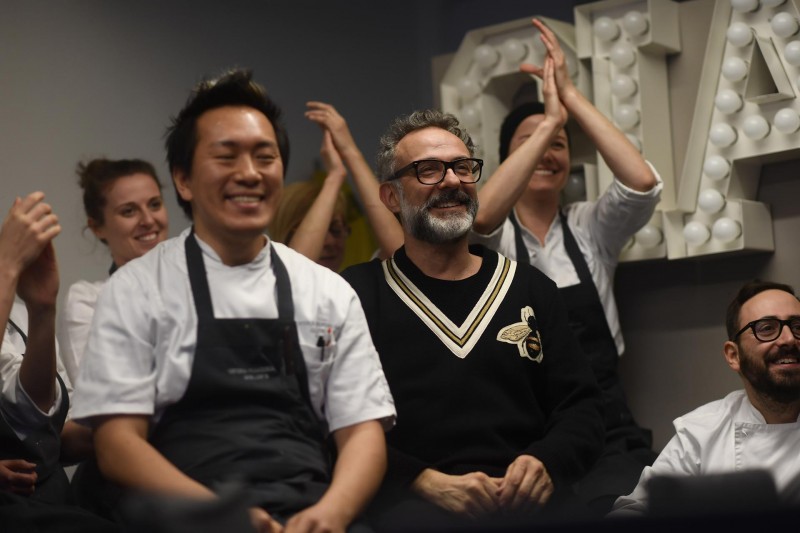 Photo Credit: osteriafrancescana.it
Photo Credit: osteriafrancescana.it
HL: What did you find was the most usable ingredient for many of the dishes?
MB: Bread. There are so many different ways you can use it! At our restaurant, we use leftover bread all the time to make fresh pasta with breadcrumbs, eggs and Parmigiano all together. We make the pasta and squeeze the noodles into the chicken broth and it’s just unbelievable. So, in this book, you will see many different aspects of using food that you never thought of before. All of the dishes are easy recipes that require no special tools and are very quick and delicious ideas.
HL: What was the highest moment for you since you’ve started your Food For Soul Foundation?
MB: There are so many. One was when the mayor of Rio called me at six o’clock in the morning and said, “we need you for the Rio Olympics.” I answered, “Why not?” This helped open the door for the future of the Refettorio. Another was when we were at the Refettorio in Milan, and a Senegalese man—a guitar player—came to dinner and played the guitar for all of the guests after dinner. I realized that the ice had broken and we had gotten to the heart of these people, and brought them together. The last was when we opened in London and a 92-year-old woman asked me for the microphone after our dinner at the Refettorio to say a few words—she said that this was the most beautiful space she had ever been to in her entire life, and that it was so amazing that we were able to create a community for them. She said, ‘now I can die very happy.’ Everyone in the room was crying. Those are moments that stay with you forever.
HL: What else are you looking forward to in 2018?
MB: We just opened Gucci Osteria in Florence. This could be the project of my life—it’s truly incredible. When you have an Italian brand that is so iconic, and you partner such high fashion with incredible food, it is a new way of approaching a dining experience. I look at the past in a critical way, not a nostalgic one, hoping to bring the best from the past into the future with me—never losing our tradition or the seven years of the brand, or the two millenniums of food history.





